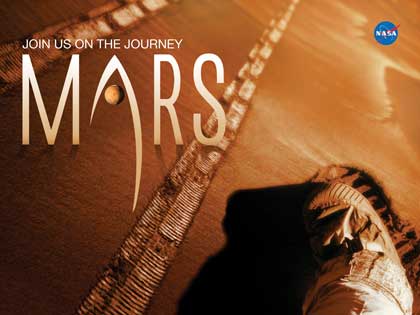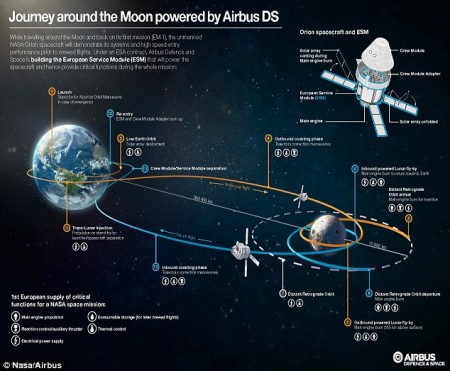December 16, 2015 – There is Mars One, Elon Musk and NASA. All talk about colonizing Mars. Mars One fantasizes about the first colonists getting to the Red Planet within the next 10 to 15 years. This is a one-way trip. No coming back. Elon Musk talks about the necessity of colonizing Mars to save humanity from a future Earth-extinction event. By becoming a multi-planet species we will ensure our survival. Other fantasists including Musk talk about terraforming Mars to make it Earth-like. What they forget, the differences between the two planets that have produced a frozen desert on one and a rich habitat for life on the other. Musk has suggested by setting off nuclear bombs we can warm Mars up. My response in listening and reading his explanations is one word, “poppycock.”
On the other hand NASA’s ambitions to go to Mars with human crews seem far more practical although somewhat fantasy. With successful robot explorers orbiting or crawling on Mars’ surface, one wonders why humans are needed at all. NASA answers that in a document entitled, NASA’s Journey to Mars: Pioneering Next Steps in Space Exploration, where Mars is described as “the horizon goal for pioneering space…the next tangible frontier for expanding human presence.” What NASA wants to learn are it describes as some of humanity’s most fundamental questions and it believes humans need to be present for the answers. These questions are:
- Was Mars home to life and is there life there today?
- Can Mars be a safe place for humans in the future?
- What can Mars teach us about how life began on Earth and about life beyond Earth?
- How can going to Mars make us better understand our home planet, its past, present and future?
I would argue that question #1 doesn’t require our human presence whatsoever. A succession of robotic landers can drill and scoop and test for years to let us know. The same is true for questions #3 and 4. We don’t need to put living humans on Mars to get answers to these queries. So it really comes down to question #2 and our own human drive to explore in person. For that reason alone NASA has laid out a plan that is ambitious and thorough.
The first step is getting there while surviving the conditions, distance and time needed for the trip. Then once we are there it is about surviving on the surface of the planet for the duration of the mission. And then there’s the long voyage home. This is complicated stuff and NASA believes it has a handle on all of it, whether it’s existing technology, or concepts that have yet to be turned into engineering solutions.
NASA has been sharing its plans with the public and its latest outreach reveals how it intends to use the Orion spacecraft, the heavy-lift Space Launch System (SLS) and its experience in long-duration flight garnered from the International Space Station (ISS) to take the steps that will get humans to the Red Planet and back.
So as we conclude the year 2015 let’s look ahead as NASA describes how it will be done.
It all begins with Orion’s Exploration Mission 1 in 2018. This will be a flight without a human crew. Orion doesn’t need humans to fly because it can be completely controlled from Earth. On this three-week mission the spacecraft will fly past the Moon to a point about a half-million kilometers from Earth and then do a second Moon flyby before returning to Earth.
Mission 2 comes five years later in 2023 with a human crew of four aboard following the same route.
Mission 3 is three years later than that, in 2026. It will be preceded by an Asteroid Redirect Robotic Mission launched in 2020. That robotic spacecraft will grab a chunk of a Near-Earth asteroid and ferry it to a location in lunar space where the Mission 3 crew will rendezvous with it to gather samples for study.
Don’t ask for a timetable after 2026 because it doesn’t exist. As of this date a human presence on Mars is likely to happen sometime in the 2030s. There is much in theory that has to be turned into practical technology between now and then. Any trip to Mars and back with present propulsion technologies amounts to a venture lasting longer than an Earth year. And that doesn’t include the time spent on the Martian surface. As NASA sees it any human mission to Mars will last approximately 1,100 Earth days. That’s almost 3 years.
Today with our human spaceflight destination the ISS, we are totally Earth reliant. Other than a small test garden growing lettuce and a space toilet system that recycles wastewater to make it potable we have no means of keeping people alive in space without supplying them from our planet. We are about half-way through an experiment to see the impact of prolonged exposure to near-Earth space to two humans on board the ISS. If a mission to Mars takes 3 years we still have a lot to learn about how this will effect us.
NASA has set a goal for human presence in space without Earth reliance. An Earth-independent operation is critical to any Mars mission. The technological challenges can be categorized as:
- transportation
- habitation
- human sustainability.
NASA is pretty good so far in figuring out the transportation part. It has toyed with propulsion options that could dramatically shorten the time it takes to get to Mars and back. This alone would make habitation and human sustainability challenges easier to address.
Building a habitation that can address the hazards of space, that can be smart, reliable, and self-repairing remains a bit of a dream. The use of materials from space is one of the objectives of Orion’s Mission 3. Can we exploit the materials found in asteroids to help us with both habitation and human sustainability? After 2026 we will know more. And once we get to Mars what will be the nature of the habitations we construct there? How and with what will we construct them? Without technological answers to habitation we cannot address human sustainability. NASA talks about using the Proving Ground of the near-lunar space environment to address habitation and sustainability. Will it take a decade or more to perfect the technology? Will there be sufficient funding of this endeavour to ensure its success?
In November NASA announced it was accepting applications for the next generation of astronauts. Submissions will be accepted from December 14th to mid-February 2016. Those accepted will be announced in 2017. Work-related and academic experience needed – degrees in engineering and mathematics, biological or physical sciences, 3-years of related professional experience or 1,000 hours of jet flight experience. The astronauts selected in this recruitment drive will likely be the first human Martians. That is, of course, if all the technological challenges can be solved.










